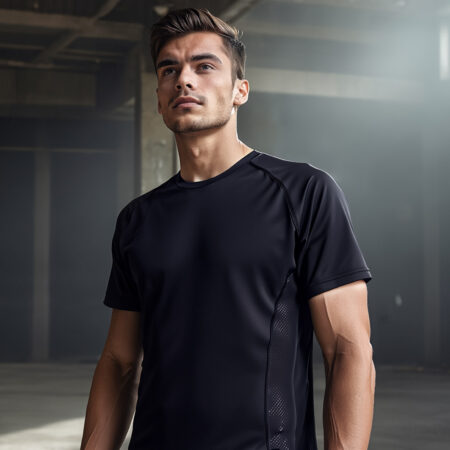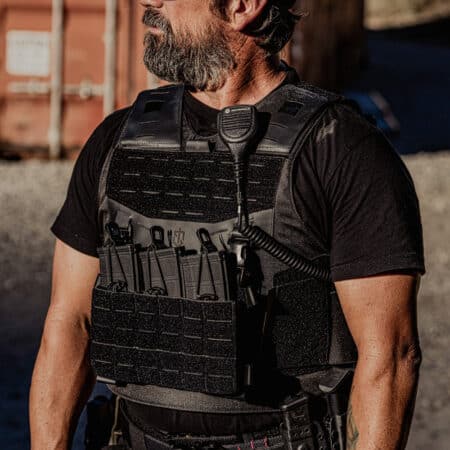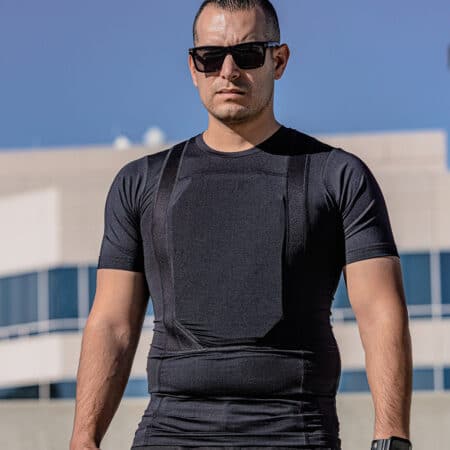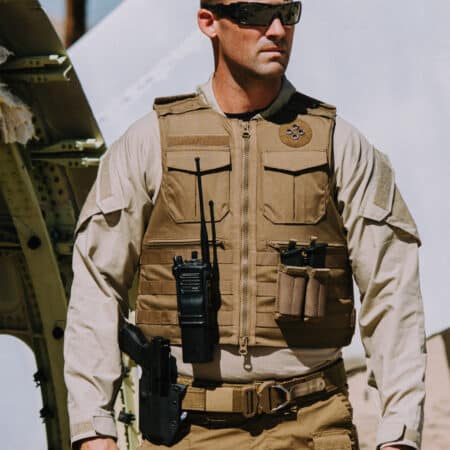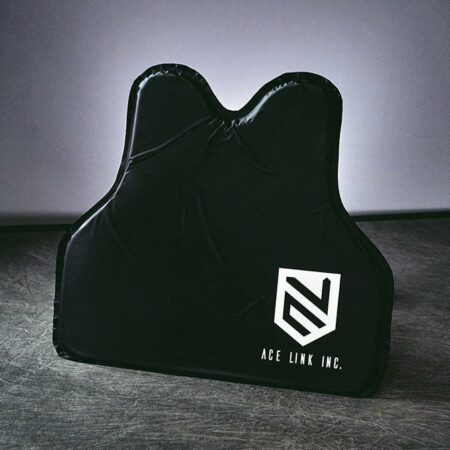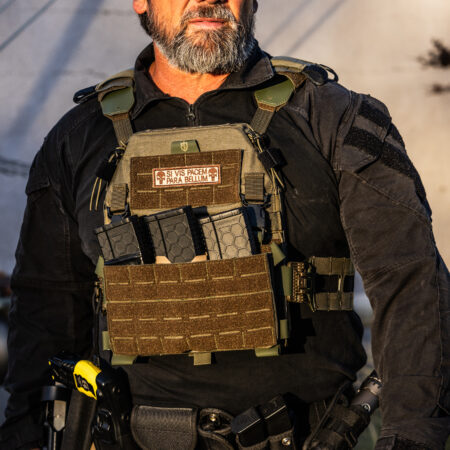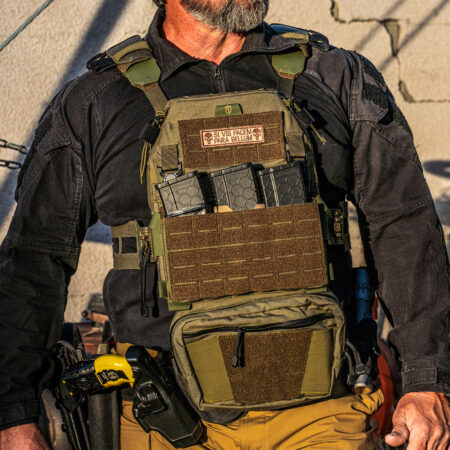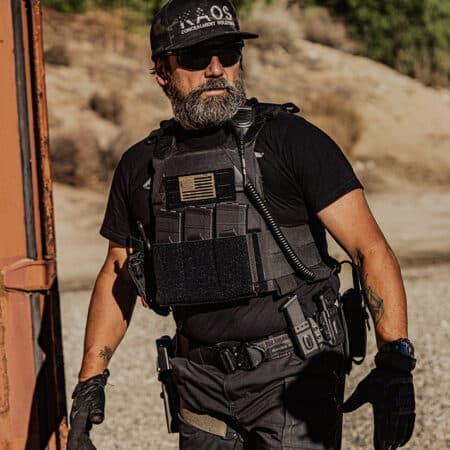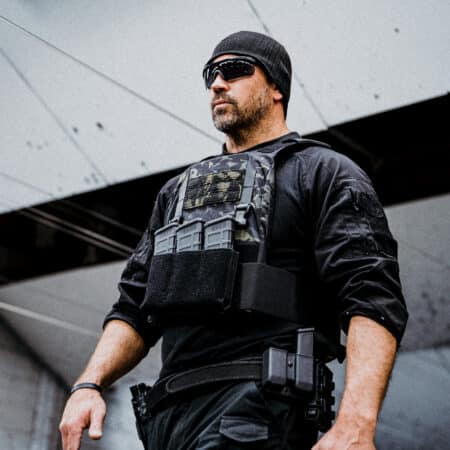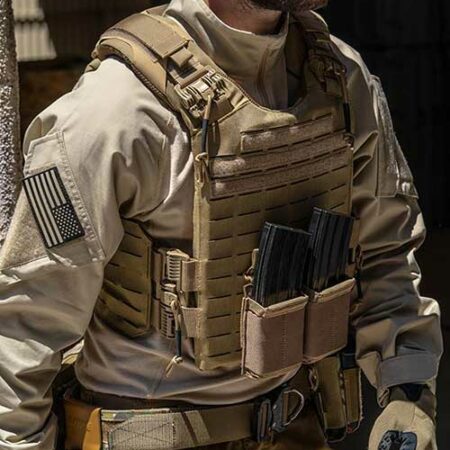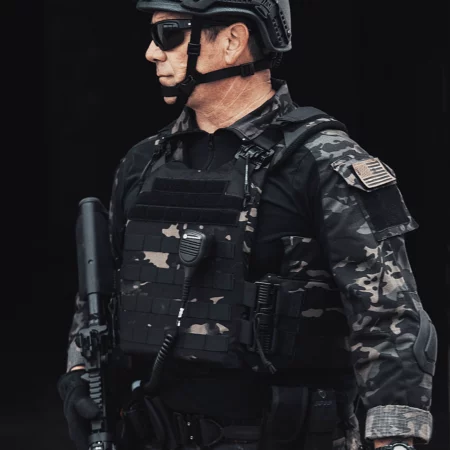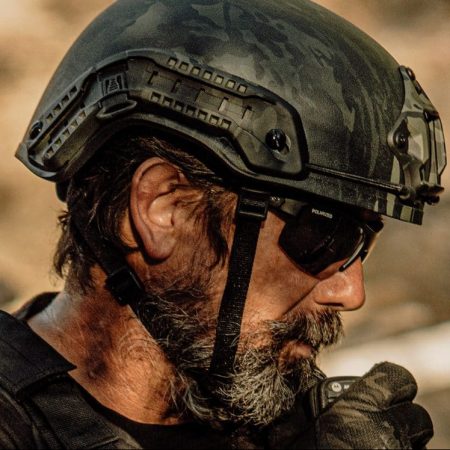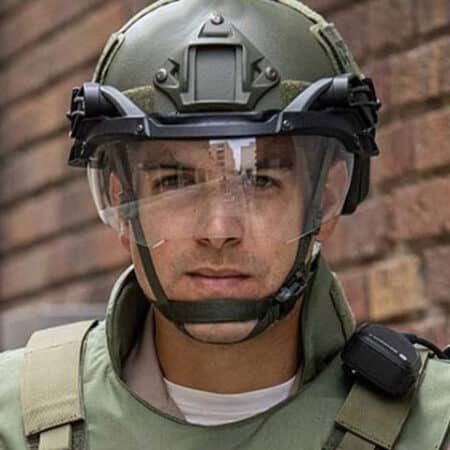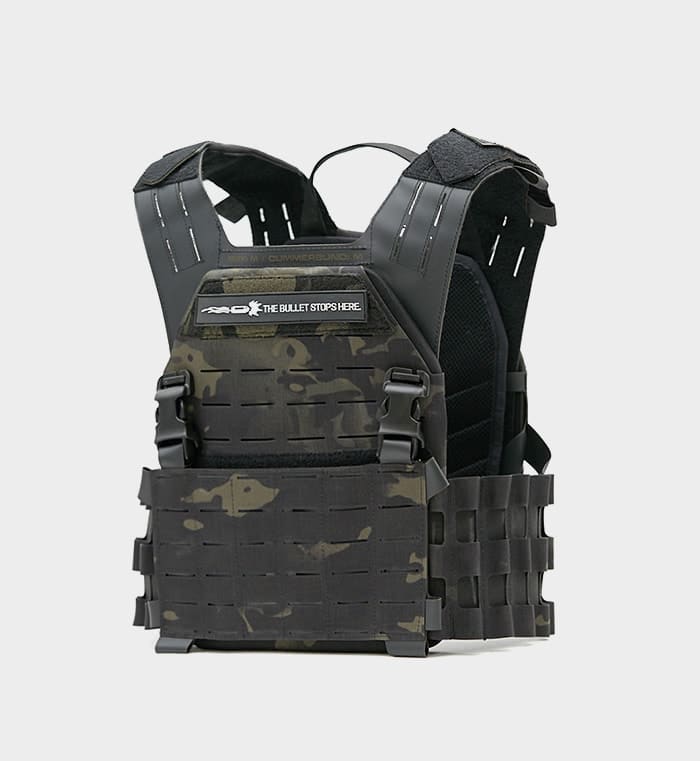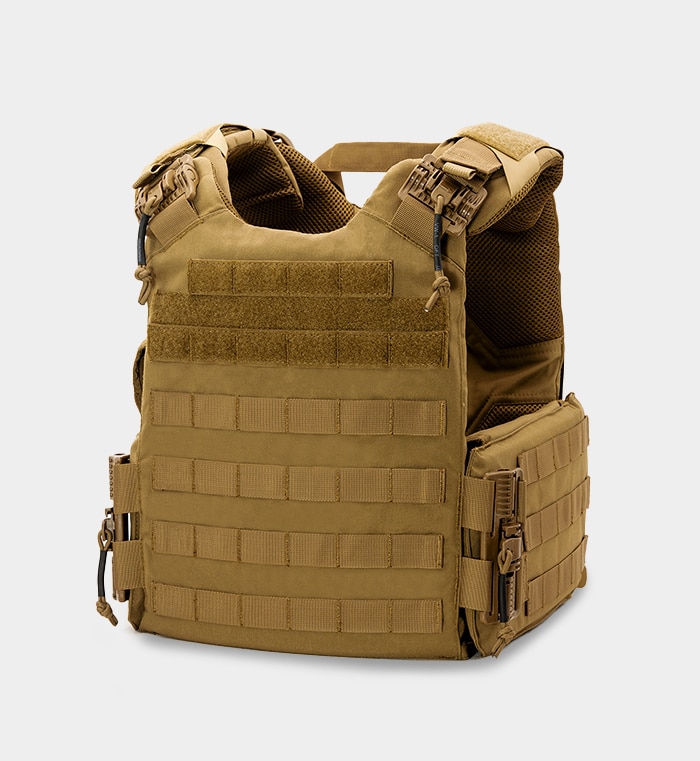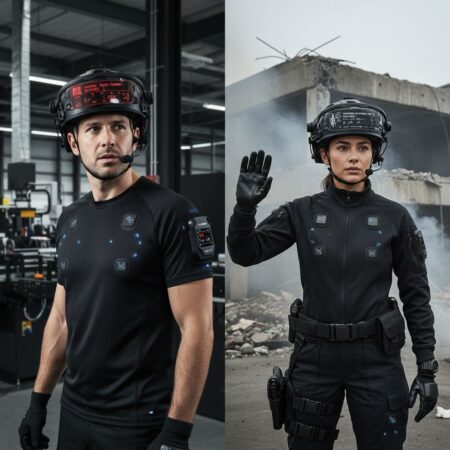In any aspect of life, you can only be as effective as your training, practice, and preparation allows you. Nowhere is this more true, than in combat. Especially, when you are engaging in Armed combat, with firearms, in a life-threatening situation. Most people understand this when it comes to firearms training. They spend hours upon hours at the range perfecting their marksmanship and other combat skills. However, they don’t apply the same process to Training with Armor.
When you wear body armor, especially hard armor plates, your mobility, posture, and conditioning can be affected quite significantly. Armor plates can be heavy, and if you aren’t used to wearing them in training, they can be a major hindrance to your combat performance.
So, in today’s post, we will talk about the training with hard armor plates, and how you can improve your movement, conditioning, and overall combat performance while wearing hard armor.
Armor Fitting and Adjustments:
The first step to training with armor is getting the right fit. This includes two main tasks, firstly, you need to get the right-sized armor plates, and secondly, you need to get a well-fitting plate carrier.
As far as the armor plate is concerned, find the size that covers your vital organs, without hindering your movement. When in a standing position, the top of the plate should rest at the level of the jugular notch, and the bottom should be a couple of inches above your belly button. As far as the width is concerned, your plate should offer maximum coverage without hindering the movement of your arms.
Plate carriers are usually sized according to the plate they carry. They can be adjusted to fit almost any body type. Just make sure that the plate carrier shouldn’t be too loose that it shifts around on your body when you move, and neither should it be too tight that it feels uncomfortable. Ideally, the plate carrier should just start to feel when you breathe in and expand your chest.
Product Comparision
Cardiovascular Adaptations for Training with Armor
One of the main reasons to train with body armor is to improve your cardio and conditioning. Doing Cardiovascular training with Armor Plates presents several challenges, and has multiple benefits as well.
The biggest challenge present by Armor Plates is their weight, followed by the restrictions they impose on your movement. They make any physical activity more strenuous and demanding, leading to quicker fatigue and risk of injuries as well. Therefore, it is important to gradually increase the intensity of your armor workouts.
Though these challenges can be tough, facing them has equally significant benefits as well. Most importantly, these armor workouts improve your cardiovascular health and develop strength and endurance specifically required for wearing heavy armor plates. They help you prevent fatigue in combat situations, and can greatly improve your combat performance, and survivability.
One of the safest, easiest, and most effective cardio exercises to start with is simple jogging or running. Hiking can also be a great option. If you are training indoors, jumping jacks, high knees, stair climbing, jump rope, and burpees can make up for an excellent cardio workout.
All of these exercises help you build up your cardio. In fact, they become notably more effective when performed with the added challenge of armor plates or weighted vests.
Strength and Endurance Building for training with armor
When training with body armor, you need to focus on strength and endurance training as well. Many individuals who wear armor plates on duty complain about back and joint pain. This is usually caused by the weight of the armor and tactical gear, especially as they get older. The risk of injuries can be reduced if you train with armor, build your strength, and improve your endurance.
One of the best practices is to do traditional strength exercises with the added weight of body armor. You should pay special attention to building your core, and lower back muscles, along with strengthening your knees.
Push-ups, squats, crunches, and planks are excellent exercises for strength training with body armor plates, however, make sure to take it slow and steady, to avoid injuries and overtraining.
Tactical Movement Techniques
Cardio and strength training are great for acclimating to the added weight of hard armor plates. However, for combat effectiveness, you need to practice Tactical Movement Techniques with your armor setup as well.
In a combat situation, you have to move through narrow spaces with your firearm, take cover behind walls, crouch, and sometimes even dive and roll. The weight and restriction of armor panels can make these movements difficult, especially, if you aren’t used to tactical movements while wearing body armor.
You should try and maintain a low center of gravity while crouching to improve your stability and move with proper footwork. Furthermore, when you are diving or rolling, you must maintain proper form and technique, otherwise, you can get injured. Train to recover from dives and rolls as well, so that you instantly get back into a combat stance.
Tactical movement requires you to make quick directional changes and move between different vantage points efficiently. Like any other form of physical combat, this requires strong footwork that can only be developed through training and repetition.
Improving Flexibility and Agility for training with Armor
Next up, you need to train to improve your flexibility and agility. Body armor is inherently restrictive, which can be particularly challenging for individuals lacking flexibility and agility.
You should incorporate specific stretches and exercises into your training routine, and focus on improving the range of motion in specific areas encumbered by the armor, such as shoulders, hips, and knees.
Aside from stretching, you also need to improve your agility and speed. There are several specific drills you can do to improve your agility and reaction times. Complex movement drills with cones and footwork ladders, along with shuttle runs can improve your ability to change direction quickly and maintain balance under the weight of heavy armor plates. Additionally, exercises and activities that involve quick responses to auditory or visual cues, can be great for building fast reaction times and overall agility.
The objective is to familiarize yourself with the movements and actions required for effective combat maneuvering. For instance, if you see a boxer throwing punches, the movement in itself looks quite simple, but you can’t just get up and start throwing punches like a boxer. Similarly, unless you train combat maneuvers specifically with body armor, you can develop the Flexibility and biomechanics required for it.
Scenario and Combat Drills:
So far, we have talked about exercises and training techniques geared towards improving your physical abilities like cardio, strength, flexibility, and speed. Now, let’s shift our attention toward using these physical abilities to achieve combat readiness.
The best way to do so is to engage in specialized scenario-based combat drills, with your firearms, and complete armor setup. There are many ways to go about this. You can visit your local shooting range, and take combat simulation and training exercises, or you can even set up scenario-based drills at home, and use dry firing exercises.
Several shooting ranges offer excellent training courses with complex shooting and movement drills ideal for combat training with body armor. These drills help you get used to your armor and tactical gear setup, and help you develop a wide range of effective combat techniques that could very well save your life, and help you protect others around you.
So, rather than focusing on your marksmanship training alone at the range, try to engage in such combat drills, and scenario-based exercises, and make sure you wear your armor plates, and employ your tactical gear setup, so that you can adapt your combat techniques to it.
Heat and Hydration Management
Lastly, when you are training, especially with the added weight of body armor, you should pay special attention to the care of your body. Make sure to not over-exert yourself to prevent injuries, and understand the challenges that heat and dehydration can present to your health.
While the protection that body armor plates provide is indispensable, they can also hinder your body’s natural heat regulation system by covering your chest and back. This can increase the risk of heat exhaustion, especially if you aren’t careful. Keep an eye out for the symptoms of heat exhaustion, such as excessive sweating, weakness, dizziness, nausea, and accelerated heartbeat. If you notice these symptoms in yourself or one of your training partners, try to get out of the sun, take off your armor and excessive clothing, and seek medical assistance.
“Staying properly hydrated is your primary defense against dehydration.”
Make sure to drink water after regular intervals while training. You can also use sports drinks which have beneficial electrolytes and minerals that aid in hydration.
Final Thoughts:
So, in conclusion, training with body armor is essential for combat effectiveness. It can help you build up your strength, conditioning, agility, and cardiovascular health, and help you develop positive habits that take your combat effectiveness to the next level.



